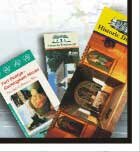|
 The Bellevue Mine of West Canadian Collieries went into production in 1904. The main access was through a horizontal tunnel, completed in 1905, which was driven from the surface to intersect with the four main coal seams. By 1907 the colliery was producing about 1200 tons of coal a day when it was working, and in 1910a new tipple was built. During the peak years of production, 1, the Bellevue mine employed 500 men and produced over 200,000 tons of coal a year. It finally closed in 1961. The Bellevue Mine of West Canadian Collieries went into production in 1904. The main access was through a horizontal tunnel, completed in 1905, which was driven from the surface to intersect with the four main coal seams. By 1907 the colliery was producing about 1200 tons of coal a day when it was working, and in 1910a new tipple was built. During the peak years of production, 1, the Bellevue mine employed 500 men and produced over 200,000 tons of coal a year. It finally closed in 1961.
All of the coal was mined by variations of the "room and pillar" mining method in which the area to be extracted was developed by roadways driven approximately at right angles, forming pillars 10 to 20 metres square to support the roof. As the mine progressed, these pillars would be removed to the extent that roof conditions allowed. A variety of methods was used for extracting, loading, and transporting the coal from the mine to the surface. Coal was discharged from the main tunnel into the tipple. There it was crushed, cleaned and graded to satisfy the requirements of various markets.
The Bellevue Mine, like most of the mines in the Pass, had a large surface plant. This included the tipple, power house, hoist house, lamp house, repair shops and a washhouse. Of the buildings visible in historic photographs, only the washhouse built in 1910 on top of the cliff remains. A walkway of over ten flights of steps can be seen in the photograph extending from the washhouse down to the entrance to the mine. Today the portal of the tunnel, foundations and debris from the surface plant can still be seen.
The washhouse was a large one storey structure with a low-pitched gable roof and stucco covering, constructed with the fire resistant hollow brick tile favoured by West Canadian Collieries. The washhouse contained lockers and showers, and it was here that the miners changed from their street clothes to their work clothes before descending into the mine. After their shift they cleaned up before going home. Their mining gear, often damp or wet from long hours underground, was hung in metal mesh lockers to be dried by steam heat.
A major tragedy occurred in the Bellevue
mine on December 9, 1910. The afternoon shift of 42 men went down into the mine. At about 8:00 p.m. a tremendous explosion swept through the mine, and forced the air out of the tunnels. Rock falls from the roof had ignited fine coal dust and the ever-present methane gas. Despite the heroic efforts of rescue teams, a total of 30 men lost their lives.
Directions: A tour of the main tunnel under the auspices of the Crowsnest Past Ecomuseum Trust gives a glimpse of the underground life of the miner. Return to 213 Street and turn left. Go west to Highway 3. Continue accross the highway and follow 9 Avenue over the railway tracks to Hillcrest.
|











